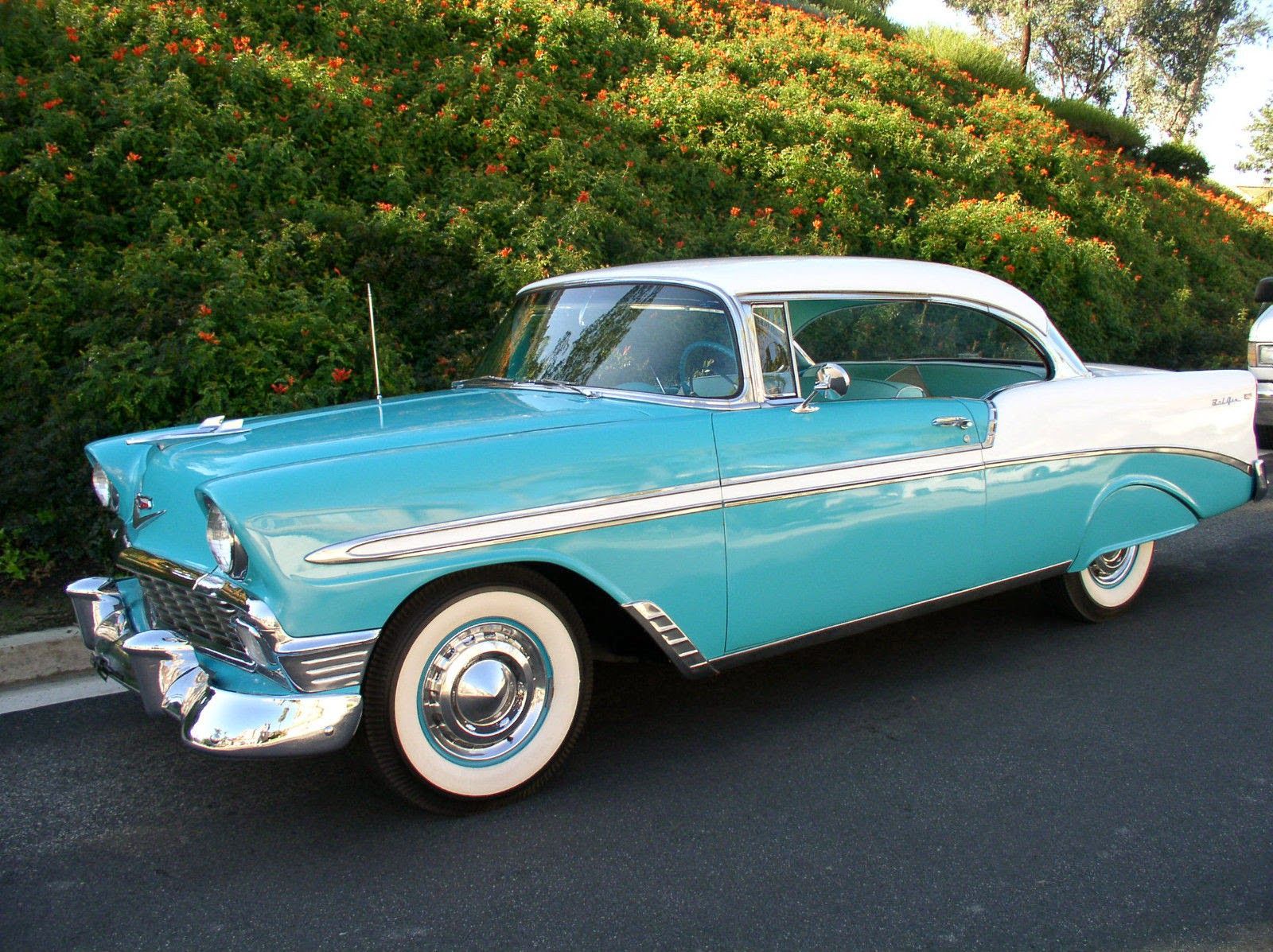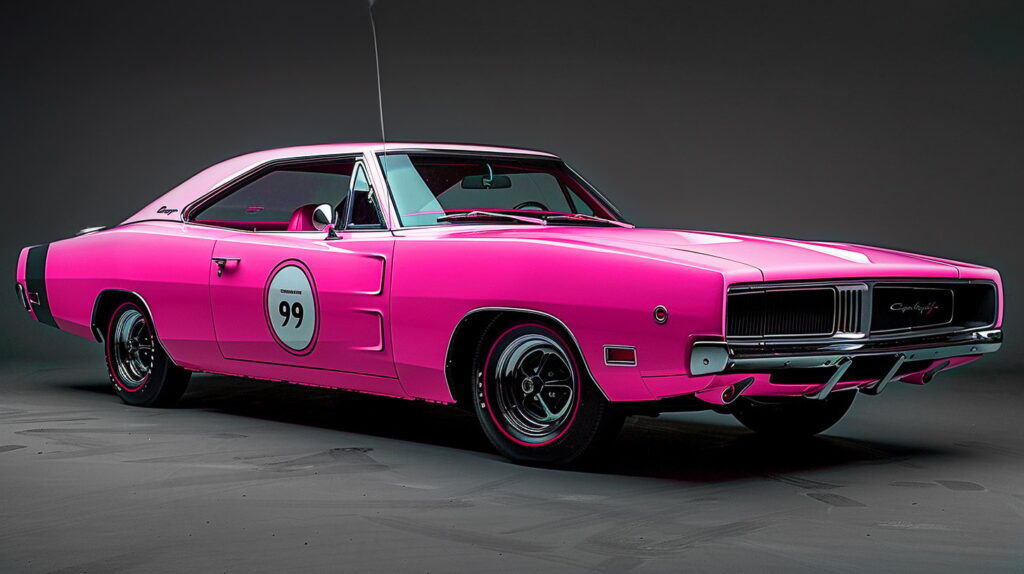
The automotive world is a wild ride, isn’t it? One moment, a car is the talk of the town, gleaming under showroom lights with promises of innovation. The next, it’s quietly shuffled off the stage, its nameplate fading faster than last year’s tech trend. Whether due to sluggish sales, corporate restructuring, or changing tastes, vehicles come and go, leaving behind a fascinating trail of what-ifs and well-deserved goodbyes.
It’s truly amazing how subjective our car culture can be. One person’s hidden gem is another’s daily rental horror story. Some models, initially overlooked, now fetch hefty prices, while others serve as stark reminders of ambitious plans gone wrong. With hindsight, we can see the patterns: which cars grew into legendary status, and which ones deservedly vanished into obscurity.
In this deep dive, we’re buckling up to explore 13 such rides – a captivating mix of vehicles that, for various reasons, went from being “sought-after” to surprisingly “stale.” We’ll celebrate the forgotten brilliance of some, and perhaps applaud the departure of others. Get ready, because sometimes, cars don’t just die; they become heroes or live long enough to become memes. Let’s hit the road!
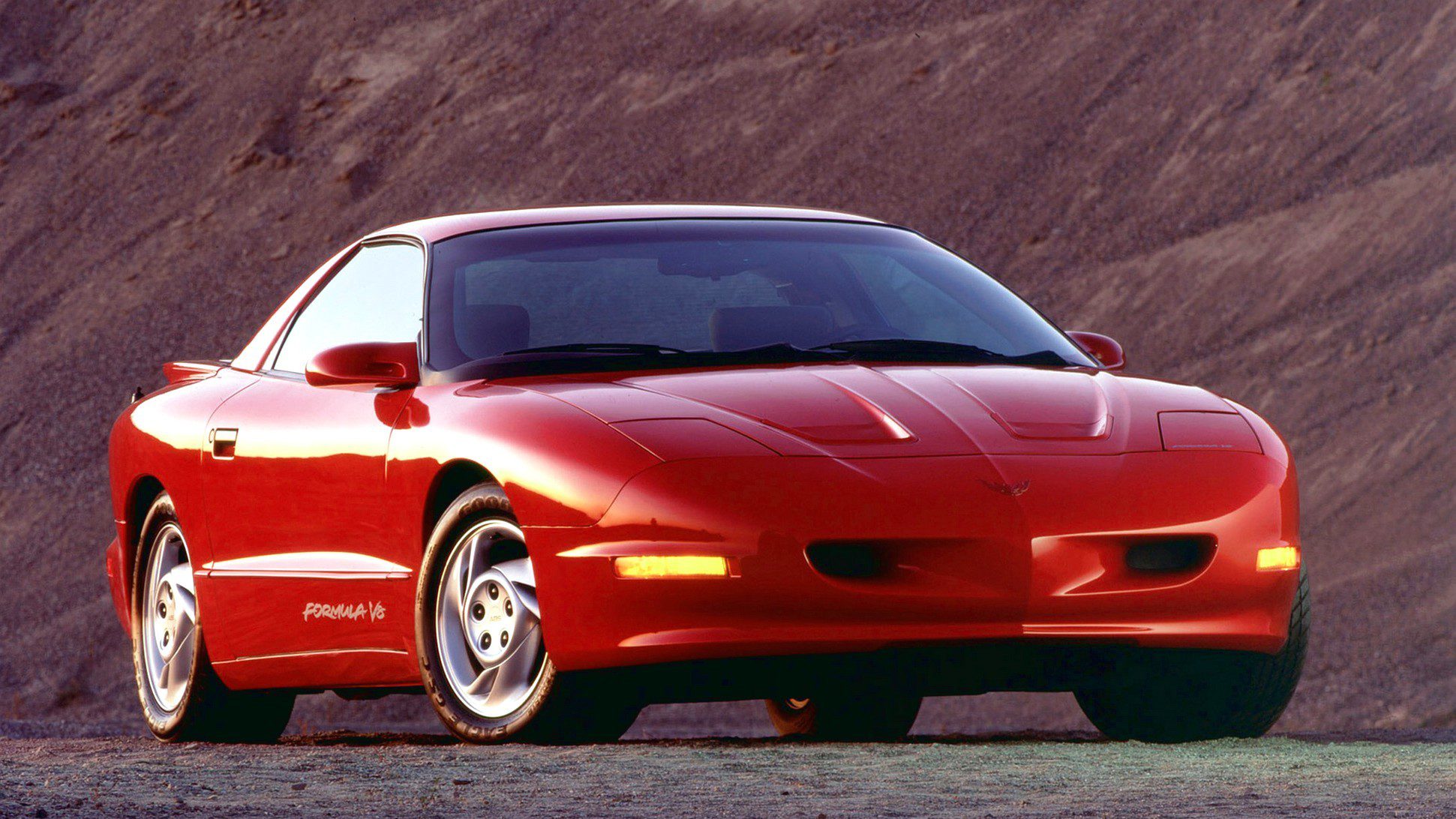
1. Pontiac G8 GXP
The Pontiac G8 GXP was GM’s final hurrah for its performance-oriented Pontiac brand before the financial collapse of 2008 spelled its doom. At a time when American automakers struggled to balance fuel efficiency with performance legacies, Pontiac dropped a bombshell: a full-size sedan with Corvette power and rear-wheel drive. It was a potent, surprising machine.
Under the hood was the 6.2-liter LS3 V8 straight from the C6 ‘Vette, churning out a healthy 415 horsepower and 415 lb-ft of torque. It could be mated to a six-speed manual transmission—a rarity for a sedan—and had a 0–60 time of just over 4 seconds. It was raw, loud, aggressive, yet comfortable enough for daily driving. Despite its immense potential, it was introduced at precisely the wrong time.
The 2008 financial crisis devastated the auto industry, leading to GM’s bankruptcy and Pontiac’s demise. The G8 GXP barely had two model years to gain traction, and sales were limited. Marketing was weak, and the car was misunderstood. Today, the G8 GXP is a sought-after sleeper, appreciated far more now than when new, blending V8 lunacy with European dynamics, Brembo brakes, and magnetic ride control.
Car Model Information: 2025 Audi Q7 55 Premium Plus
Name: Pontiac G8
ModelCode: GMX557
Aka: Holden Commodore#Chevrolet Lumina
Manufacturer: Holden
Production: December 2007
ModelYears: 2008–2009
Assembly: Adelaide, South Australia
Class: Full-size car
BodyStyle: Sedan (car)
Layout: Automobile layout
Platform: GM Zeta platform
Related: Buick Park Avenue,Chevrolet Camaro (fifth generation),Chevrolet Caprice,Holden Caprice (WM)
Engine: ubl
Transmission: GM 5L40-E transmission,automatic transmission
Wheelbase: 114.7 in
Abbr: on
Length: 196.1 in
Width: 74.8 in
Height: 57.7 in
Weight: 3946 lb
Predecessor: Pontiac Bonneville
Successor: Chevrolet SS (sedan)
Categories: All articles with unsourced statements, Articles with short description, Articles with unsourced statements from September 2018, Cars discontinued in 2009, Cars introduced in 2007
Summary: The Pontiac G8 is a full-size sedan that was produced by Holden in Australia for export to the United States, where it was sold by Pontiac. The G8, a rebadged Holden Commodore, was released in early 2008 for the 2008 model year in the United States, and in 2008 for the 2009 model year in Canada. Production stopped in mid-2009, following the decision by GM to discontinue Pontiac. While available, the G8 took the place in the Pontiac lineup of both the Pontiac Bonneville, which ceased production after the 2005 model year, and the Pontiac Grand Prix, which ceased production after the 2008 model year.
By December 2008, the rear wheel drive G8 had not become the expected sales replacement for the previous front-drive models, with 11,000 unsold G8s in the inventory and just 13,000 sold. During the 2009 global economic downturn, market prices had dropped by $3000–5000 below GM’s sticker price for the car. By July 2009, there were only 5,000 unsold G8s in inventory, with almost 30,700 sold.
With the imminent demise of the Pontiac brand, a result of GM’s Chapter 11 bankruptcy, the 2009 model year marked the end of all Pontiacs, including the G8. However, in July 2009, Bob Lutz made an off-hand comment during a press review that the G8 would be revived as the Chevrolet Caprice. Subsequently, Lutz retracted this statement, citing market conditions. Nevertheless, General Motors announced the Chevrolet Caprice Police Patrol Vehicle (PPV) in 2009, which Car and Driver described as a successor to the G8. To fill the gap left by the G8, GM announced the Chevrolet SS, a RWD V8 powered sedan for 2014 based on the Holden Commodore (VF).
Get more information about: Pontiac G8
Buying a high-performing used car >>>
Brand: Pontiac Model: G8 GXP
Price: $55,675 Mileage: 20,490 mi.
Read more about: Hidden Powerhouses: Unearthing 14 Underrated Pony Cars You Forgot Existed

2. Mazda Mazdaspeed6
The Mazdaspeed6 was Mazda’s bold attempt to bring turbocharged, all-wheel-drive excitement to the mid-size sedan segment. Based on the already well-respected Mazda6 platform, the Mazdaspeed version took things to another level with its performance credentials, aiming to challenge rally-bred legends like the Subaru WRX STI and Mitsubishi Lancer Evolution.
Under the hood, a turbocharged 2.3-liter inline-four engine made 274 horsepower and 280 lb-ft of torque. What truly made it unique was the full-time AWD system and six-speed manual gearbox, giving it dynamics closer to true performance icons. But unlike those cars, the Mazdaspeed6 didn’t shout its performance; it was subtle, classy, and unmistakably Japanese in its refinement.
Unfortunately, that understated nature also worked against it. While rivals flaunted wings and flared arches, the Mazdaspeed6 looked like a nicely dressed-up family sedan. Mazda’s marketing failed to fully capitalize on its potential, and early reliability issues with turbo seal problems also deterred would-be fans. Today, it’s a revelation, offering a proper manual, a boost-happy engine, and AWD grip.
Read more about: Mazda Revives Racing Heritage with New Spirit Racing Sub-Brand
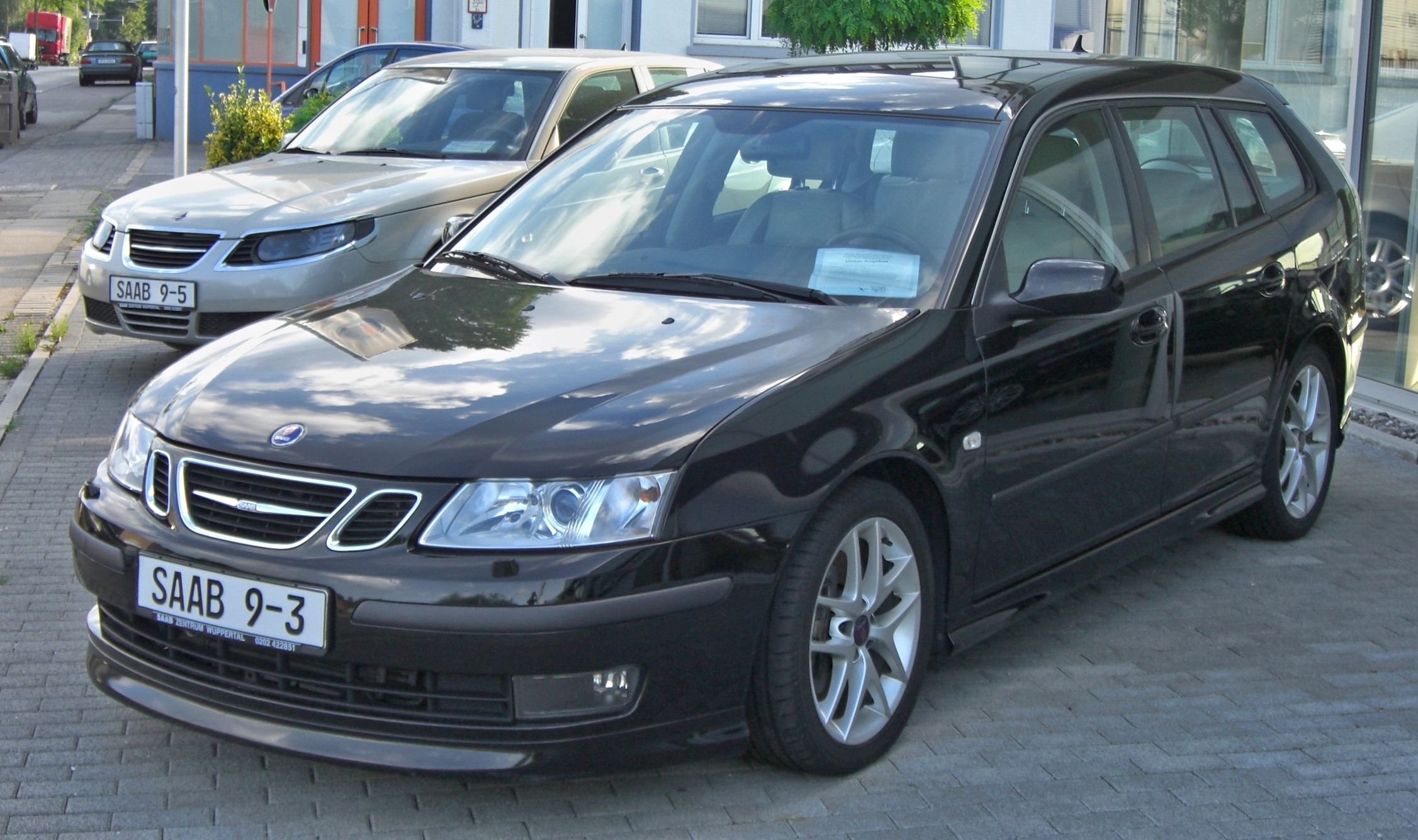
3. Saab 9-3 Turbo X
The Saab 9-3 Turbo X is one of the most underrated sports sedans of the late 2000s. Developed in the final years of Saab’s turbulent life under General Motors, the Turbo X was meant to show the world that Saab could still build a world-class performance car – and it succeeded, even if few people noticed its brilliance.
Power came from a turbocharged 2.8-liter V6 producing 280 horsepower, mated to a six-speed manual or automatic and Saab’s revolutionary XWD system. This was one of the first torque-vectoring all-wheel-drive setups on a sedan, capable of sending power to the rear wheels during aggressive driving, making it feel more agile and responsive than many of its front-heavy competitors.
What really set the Turbo X apart wasn’t just the drivetrain, but its character. Saab always did things differently, and the Turbo X proudly leaned into that eccentricity. From its all-black paint to its airplane-inspired dashboard layout, it oozed Scandinavian cool. The suspension was firm but not punishing, the steering was sharp, and the power delivery was smooth and refined. It retained that distinctly Saab balance of utility, individuality, and clever engineering.
The tragedy of the Turbo X lies in timing. It launched in 2008, right as Saab was on the verge of collapse. GM’s mismanagement and the global recession strangled its production before it had a chance to shine. Fewer than 1,000 units made it to the U.S., making it an incredibly rare find today. But for those who get their hands on one, it’s a deeply rewarding ownership experience, a glimpse of what Saab could have been in a different world.
Car Model Information: 2025 Audi Q7 55 Premium Plus
Name: Saab 9-3
Caption: 2008–2009 Saab 9-3 sedan
Manufacturer: General Motors
Production: 1998–2014
Layout: Front-engine, front-wheel-drive layout
Predecessor: Saab 900
Successor: NEVS 9-3EV
Class: Compact executive car
Categories: 2000s cars, 2010s cars, All-wheel-drive vehicles, All articles with unsourced statements, Articles with Danish-language sources (da)
Summary: The Saab 9-3 (pronounced nine-three) is a compact executive car initially developed and manufactured by the Swedish automaker Saab.
The first generation 9-3 (1998–2003) is based on the GM2900 platform, changing to the GM Epsilon platform with the introduction of the second-generation car (2003–2012). Other vehicles using this platform include the Opel Vectra, Chevrolet Malibu, and Cadillac BLS.
National Electric Vehicle Sweden (NEVS), Saab’s then parent company briefly assembled a few 9-3 sedans during 2013 and 2014.
Get more information about: Saab 9-3
Buying a high-performing used car >>>
Brand: Saab Model: 9-3 Turbo X
Price: $55,675 Mileage: 20,490 mi.
Read more about: More Than Just Metal: 10 Quirky Hatchbacks That Sparked Love or Frustration in Their Owners

4. Volvo V60 Polestar
The Volvo V60 Polestar was the product of a short-lived but wildly exciting chapter in Volvo’s history, one where the brand dared to go toe-to-toe with Germany’s performance titans. While Volvo had long been associated with safety and understated luxury, the V60 Polestar injected a heavy dose of adrenaline into the lineup.
Initially equipped with a turbocharged and supercharged inline-six making 345 horsepower, it was later reengineered to use a four-cylinder twin-charged engine with even greater output. Performance wasn’t just about straight-line speed; the V60 Polestar also came equipped with Öhlins suspension, massive Brembo brakes, all-wheel drive, and a chassis tuned for high-speed stability and precision cornering.
What set the V60 Polestar apart was how tastefully it was done. Unlike the aggressive, in-your-face styling of its rivals, the Polestar was clean, sleek, and distinctly Scandinavian. It wore its performance modestly – a splash of “Rebel Blue” paint, subtly flared arches, and minimalist badging were all that hinted at the beast within. It was a performance car for grown-ups.
Despite its impressive performance (0–60 in under 5 seconds), the V60 Polestar remained a niche product. Only a few thousand were made globally, and it was discontinued as Volvo pivoted toward electrification and efficiency. But among enthusiasts, it’s recognized as one of the finest fast wagons ever made, combining utility, sophistication, and raw capability with remarkable restraint.
Car Model Information: 2015 Volvo V60 T5 Premier
Name: Volvo V60
Caption: 2018 Volvo V60
Manufacturer: Volvo Cars
Production: 2010–present
Class: Compact executive car
BodyStyle: station wagon
Predecessor: Volvo V70,Volvo V50
Related: Volvo S60
Categories: 2010s cars, All-wheel-drive vehicles, All articles containing potentially dated statements, All articles with dead external links, Articles containing potentially dated statements from December 2014
Summary: The Volvo V60 is a compact executive station wagon (estate car) produced by Volvo Cars related to the S60 mid-size sedan. The vehicle was first released in autumn 2010, facelifted in 2014, and is in its second generation since 2018.
The second generation V60 was launched in 2018 based on the Volvo Scalable Product Architecture platform. Both generations feature a “Cross Country” variant with a slightly increased (60-mm / 2.4-inch) ground clearance and ride height.
Get more information about: Volvo V60
Buying a high-performing used car >>>
Brand: Volvo Model: V60
Price: $9,500 Mileage: 150,410 mi.
Read more about: For the Family Man: The 10 Safest Crossover Bargains of 2025 You Can’t Afford to Miss
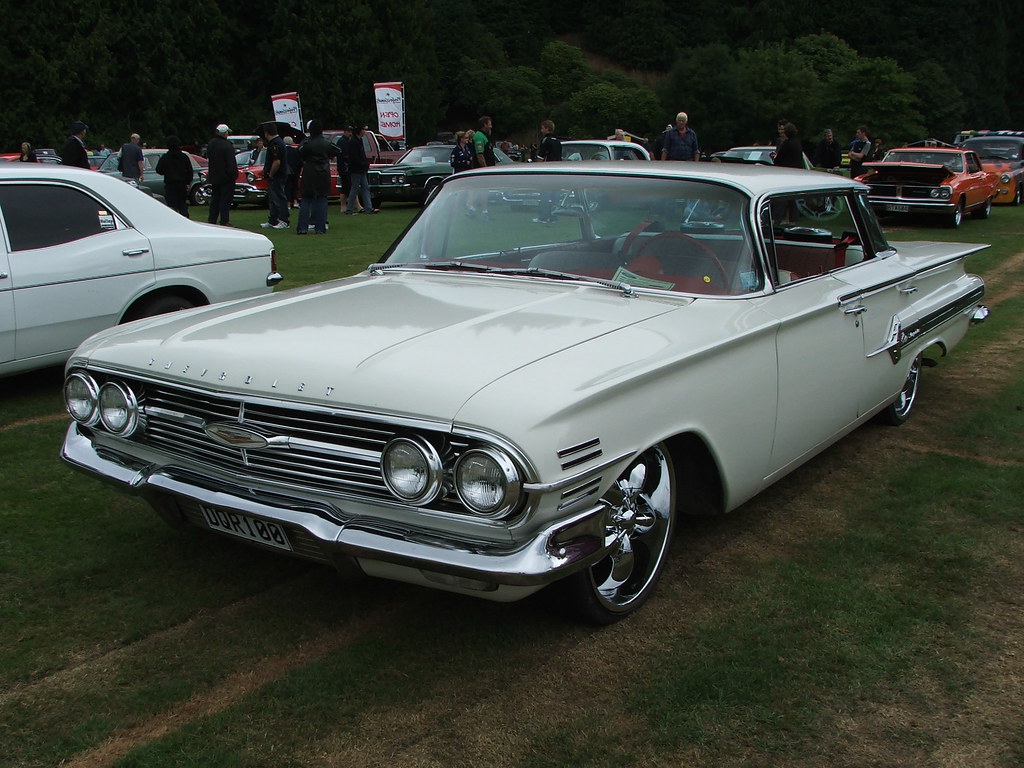
5. Chevrolet SS
The Chevrolet SS was one of GM’s most misunderstood and underappreciated performance cars—a full-size, rear-wheel-drive sedan with a 6.2-liter LS3 V8, available with a six-speed manual transmission. Its performance numbers rivaled the BMW M5. It was, in essence, a rebadged Holden Commodore from Australia, a spiritual successor to the Pontiac G8.
With 415 horsepower, magnetic ride control, and a 0–60 time in the low 4-second range, the SS was a true sleeper that could shame much more expensive machinery. It offered old-school muscle wrapped in a modern, practical package, delivering serious track capability right out of the box, all without screaming for attention.
The reason most people overlooked it? Bland styling and virtually zero marketing. The Chevrolet SS looked like an Impala to the untrained eye, and Chevy made almost no effort to distinguish it visually. This wasn’t a car that screamed for attention; it had no wild body kit, no monstrous wing, and no loud exhaust note unless you pushed it.
For those who did know what they were looking at, however, it was a performance goldmine. It had all the right ingredients: powerful V8, rear-wheel drive, exceptional brakes, and one of the last great naturally aspirated engines in a full-size sedan. Sadly, low sales and the closure of Holden’s Australian manufacturing sealed its fate, but the SS has become a modern classic.
Car Model Information: 1966 Chevrolet Impala SS
Name: Chevrolet SS
Caption: 2014 Chevrolet SS
Aka: Holden Commodore (VF)
Manufacturer: Chevrolet
Production: 2013-2017
ModelYears: 2014-2017
Assembly: Adelaide, South Australia
Class: Full-size car
BodyStyle: sedan (car)
Layout: Automobile layout
Platform: GM Zeta platform
Engine: General Motors LS-based small-block engine#LS3,V8 engine
Transmission: GM 6L80 transmission,automatic transmission
Wheelbase: 114.8 in
Abbr: on
Length: 195.8 in
Width: 74.8 in
Height: 57.7 in
Weight: 3946 lb
Related: Chevrolet Camaro (fifth generation),Chevrolet Caprice,Holden Caprice (WM)
Predecessor: Chevrolet Impala SS,Chevrolet Malibu SS,Pontiac G8
Categories: 2010s cars, Articles with short description, Cars discontinued in 2017, Cars introduced in 2013, Chevrolet vehicles
Summary: The Chevrolet SS is a performance full-size sedan sold by Chevrolet from 2013 to 2017, as a rebadge of the Holden Commodore exclusive to the United States. It was sold in the 2014-2017 model years.
It was unveiled during Speedweeks in Daytona Beach, Florida, in February 2013. The SS started sale in the 2014 model year in late 2013. It was Chevrolet’s first rear-wheel drive V8 sedan since 1996.
Get more information about: Chevrolet SS (sedan)
Buying a high-performing used car >>>
Brand: Chevrolet Model: SS
Price: $56,991 Mileage: 51,426 mi.
Read more about: 15 Iconic Nameplates: Classic Car Brands Fueling the Electric Revolution
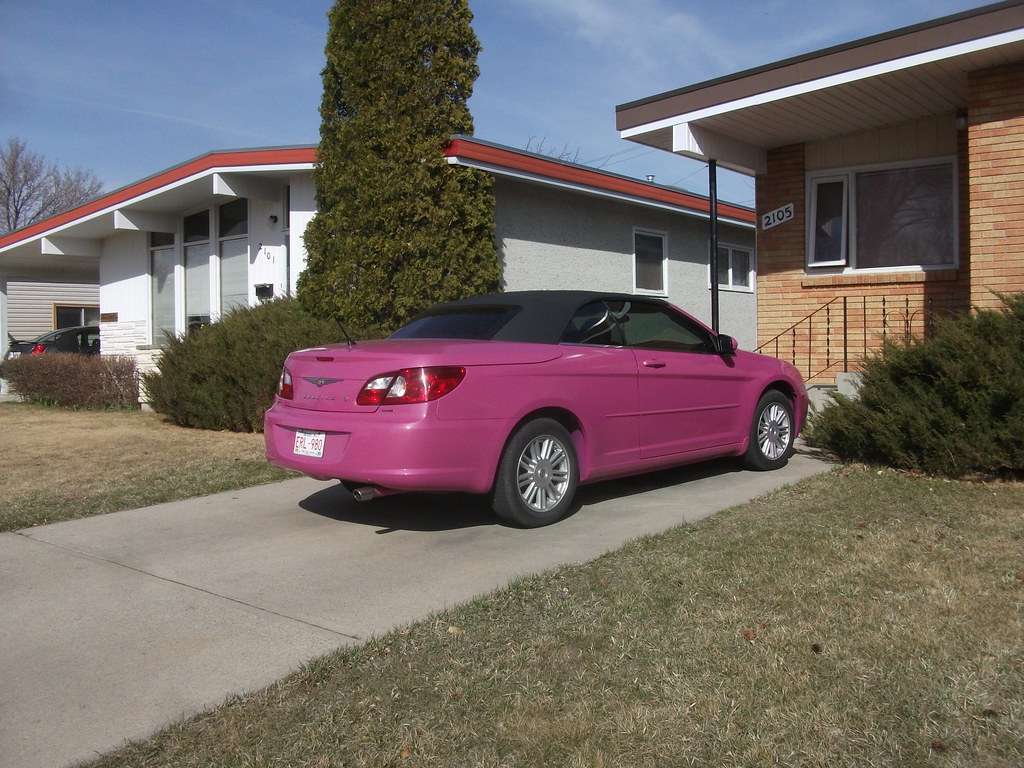
6. Chrysler Sebring
The Chrysler Sebring was intended to be Chrysler’s stylish, affordable mid-size offering, available as both a sedan and a convertible. What it ended up being, however, was a rolling compilation of poor design, underwhelming performance, and interior materials so cheap they made rental fleets weep. It never managed to inspire loyalty or enthusiasm among actual drivers.
Its engines—particularly the base 2.4-liter four-cylinder and underwhelming V6 options—were coarse, unrefined, and painfully slow compared to its Japanese and Korean competitors. The chassis was dull, the handling was sloppy, and the transmission tuning made it feel like the car was actively trying to avoid acceleration.
Perhaps worse than the way it drove was the way it was built. The Sebring’s interior was a mishmash of brittle plastics, an uninspired layout, and panel gaps you could fit a quarter through. Touch points felt cheap, and the infotainment systems aged poorly. The convertible model was plagued with reliability issues, leaking tops, and a cramped, noisy interior.
By the end of its run, the Sebring was being bought primarily by budget-conscious rental fleets, which only further hurt its public image. Its 2010 discontinuation was not only expected—it was necessary. Replaced by the far superior 200, the Sebring had become a byword for mediocrity and corner-cutting, never truly competing with its peers. Its death was a mercy.
Car Model Information: 2006 Chrysler Sebring Touring
Name: Chrysler Sebring
Class: Mid-size car
Manufacturer: Chrysler
Production: 1994–2010
Predecessor: Chrysler LeBaron
Successor: Chrysler 200
Categories: 2000s cars, 2010s cars, All articles needing additional references, All articles that may contain original research, All articles with a promotional tone
Summary: The Chrysler Sebring ( SEE-bring) is a mid-size automobile manufactured and marketed by Chrysler from 1995 to 2010 in convertible (three generations), sedan (two generations), and coupe (two generations) body styles. Both coupe generations were a Chrysler design with engineering input from Mitsubishi and were built at Mitsubishi’s Normal, Illinois facility (operated then by Diamond-Star Motors). The range was introduced in 1995, with the Coupe replacing the Chrysler LeBaron coupe. In 1996 Chrysler introduced the convertible, replacing its LeBaron counterpart.
In 2000, (then) DaimlerChrysler presented the redesigned Sebrings — Sedan, Coupe, and Convertible — at the New York Auto Show for model year 2001. The Coupe used a variant of the Mitsubishi Eclipse ST Platform, while the sedan and convertible used the Chrysler JR platform successors to the Chrysler Cirrus. The coupe was discontinued after 2005.
The third generation sedan was introduced for 2007, and a revised convertible the following year. New options included all-wheel drive on sedans and an available retractable metal top for the convertible. All Sebring models were replaced by the Chrysler 200 for the 2011 model year.
Get more information about: Chrysler Sebring
Buying a high-performing used car >>>
Brand: Chrysler Model: Sebring
Price: $8,997 Mileage: 43,190 mi.
Read more about: Buyer’s Remorse on Wheels: The 15 Vehicles Owners Most Regret Driving Off the Lot
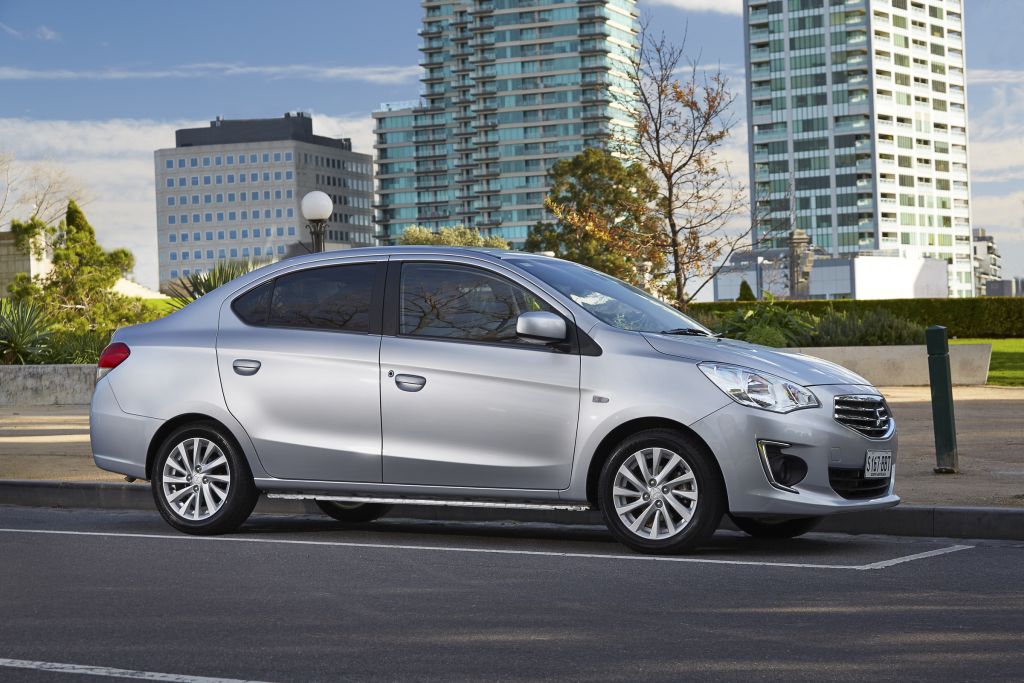
7. Mitsubishi Mirage
The Mitsubishi Mirage was marketed as one of the most affordable new cars on the market. While it technically fulfilled that promise, it did so at the expense of nearly everything that makes a car enjoyable or even acceptable to drive. It felt like a vehicle built purely to hit a price point with minimal consideration for quality.
Under the hood was a wheezing three-cylinder engine that produced a meager 74 horsepower. While that might be forgivable in an ultra-lightweight vehicle built strictly for city duty, the Mirage’s sluggish acceleration and droning CVT made highway merging feel like a dangerous gamble. Its zero-to-sixty time hovered somewhere in the 12-second range, simply unacceptable for anything beyond a golf cart in the 2010s.
The interior felt every bit as cheap as its price tag suggested. Hard plastics covered every surface, the seats offered little to no support, and sound insulation was seemingly nonexistent. Road and wind noise poured into the cabin, making even short drives feel like endurance tests. While other budget cars offered surprising levels of refinement, the Mirage offered only the bare minimum.
Ultimately, the Mirage wasn’t just cheap—it was cheaply made. It exemplified a corner of the automotive market that catered to absolute bottom-barrel pricing with no regard for driving dynamics, comfort, or even long-term ownership value. Its eventual discontinuation wasn’t just welcome—it was overdue. The automotive world had moved on, and the Mirage remained a relic of an era best forgotten for its disregard of driving dynamics or comfort.
Alright, so we’ve already buckled up and cruised through some truly underrated rides and a couple that, let’s be honest, were better left in the rearview mirror. But the automotive landscape is vast, and there are plenty more stories to tell. Now, we’re shifting gears to explore three more entries in the “hall of shame” – cars that utterly failed to impress – and then, we’ll celebrate three iconic nameplates that once went stale but found their way back to relevance, some with a triumphant roar, others with a bit of a bumpy return. Get ready for the next leg of our journey through automotive history’s hits and misses!
Car Model Information: 2024 Mitsubishi Mirage RALLIART
Name: Mitsubishi Mirage
Caption: Mitsubishi Mirage (sixth generation)
Manufacturer: Mitsubishi Motors
Production: 1978–2003,2012–present
Class: Subcompact car
Layout: Front-engine, front-wheel-drive
Predecessor: Mitsubishi Lancer (A70)
Successor: Mitsubishi Lancer#Eighth generation (2000)
Categories: 1980s cars, 1990s cars, 2000s cars, 2010s cars, 2020s cars
Summary: The Mitsubishi Mirage is a range of cars produced by the Japanese manufacturer Mitsubishi from 1978 until 2003 and again since. The hatchback models produced between 1978 and 2003 were classified as subcompact cars, while the sedan and station wagon models, marketed prominently as the Mitsubishi Lancer, were the compact offerings. The liftback introduced in 1988 complemented the sedan as an additional compact offering, and the coupé of 1991 fitted in with the subcompact range. The current Mirage model is a subcompact hatchback and sedan and it replaces the Mitsubishi Colt sold between 2002 and 2012.
Get more information about: Mitsubishi Mirage
Buying a high-performing used car >>>
Brand: Mitsubishi Model: Mirage
Price: $17,999 Mileage: 3,542 mi.
Read more about: Unearthing Unexpected Value: 9 Economy Rides That Prove Affordability Doesn’t Mean Compromise
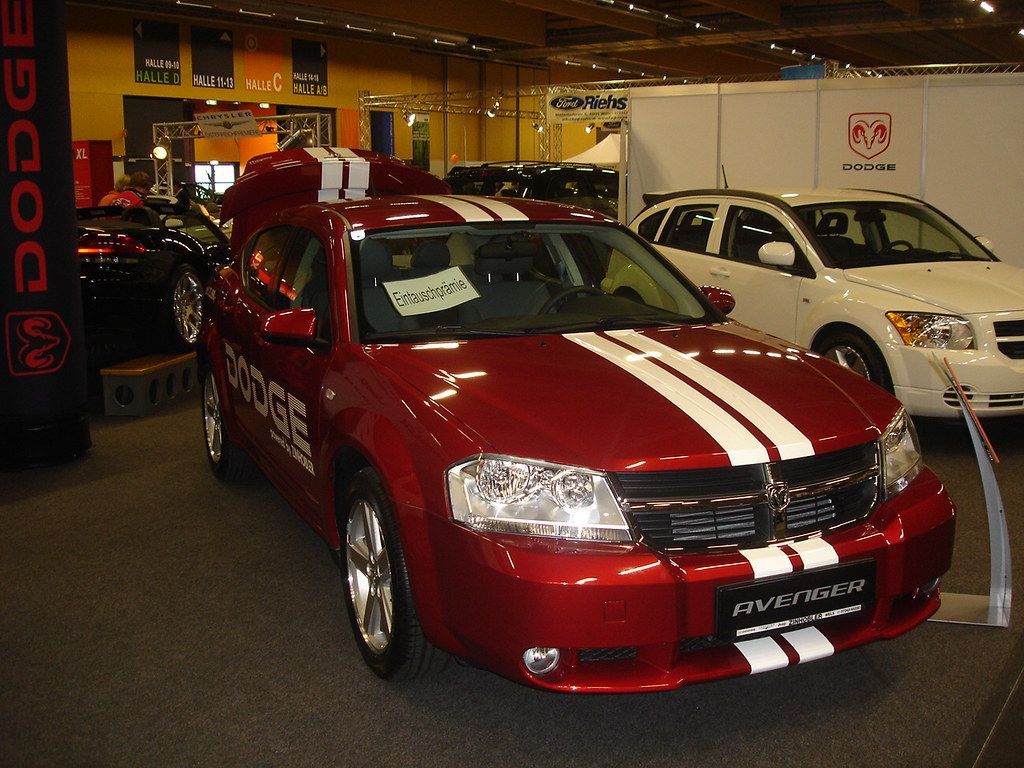
8. Dodge Avenger
The Dodge Avenger was supposed to be the cool, younger sibling to the Charger, offering that raw muscle car attitude in a more compact, mid-size sedan package. The idea was to attract younger buyers looking for aggressive styling and a hint of performance. Unfortunately, what landed in showrooms felt less like a junior muscle car and more like a hastily assembled project with an identity crisis. It looked tough on the outside, but the drive? That was a whole different story.
Underneath that bold front fascia and chunky styling, the Avenger was built on the outdated Chrysler JS platform, which contributed to its dull and lethargic personality. The base four-cylinder engines and sluggish automatics delivered a vague, uninspired, and frankly, noisy driving experience. Even the available V6 did little to inject any real excitement, leaving drivers feeling like they were piloting an appliance rather than a performance-inspired sedan. It really struggled to live up to its own aggressive aesthetic.
And then there was the interior. Oh, the interior. Dodge opted for a sea of hard plastics, flimsy buttons that felt like they might detach at any moment, and an overall lack of inspiration throughout the cabin. The design lacked cohesion, and the ergonomics were frustrating, making even simple tasks feel like a chore. Despite attempts at a mid-cycle refresh to update the interior, it consistently fell short of what buyers expected from rivals like the Ford Fusion or Honda Accord, screaming “rental lot special” rather than “driver’s choice.”
Ultimately, even with attempts to jazz it up with an “R/T” trim and slightly improved powertrains, it was too little, too late. The Avenger had already cemented its reputation for looking mean but driving like, well, oatmeal. When it was finally discontinued in 2014, few tears were shed. Its departure arguably allowed Dodge to focus more on its Charger and Challenger models, which have since thrived. The Avenger was a car that simply couldn’t deliver on its promises, forever stuck in an automotive limbo of forgotten potential.
Car Model Information: 1970 Dodge Challenger Base
Name: Dodge Avenger
Caption: 2012 Dodge Avenger sedan
Class: Sport compact,Mid-size car
Manufacturer: Dodge
Production: 1994–2000,2007–2014
ModelYears: 1995–2000,2008–2014
Successor: Chrysler 200,Dodge Dart (PF)
Categories: 2000s cars, 2010s cars, All articles with dead external links, Articles with dead external links from April 2015, Articles with short description
Summary: The Dodge Avenger is a front-wheel drive, mid-sized sedan that was marketed by Dodge. The Avenger made its North American debut in 1994 for the 1995 model year as a coupe that was produced until 2000. The model name was reintroduced to the market as a four-door sedan in 2007 for the 2008 model year. The Dodge Avenger name was used on the South African market Hillman Avengers in 1975 and 1976.
The 2014 model year marked the end of Avenger production as the mid-sized models for both the Dodge and Chrysler brands were consolidated into the new Chrysler 200 introduced for the 2015 model year while Dodge received the new compact Dart.
Get more information about: Dodge Avenger
Buying a high-performing used car >>>
Brand: Dodge Model: Avenger
Price: $59,999 Mileage: 46,457 mi.
Read more about: 14 Iconic Actors Who Publicly Revealed Their Deep Dislike For Their Own Films
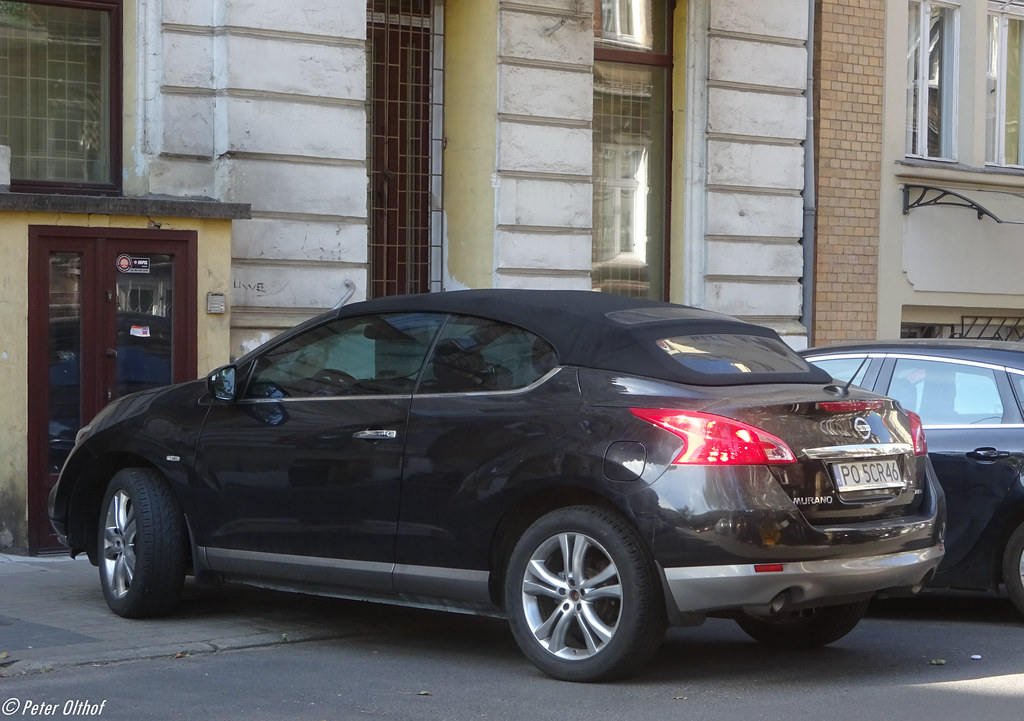
9. Nissan Murano CrossCabriolet
Imagine this: you take a perfectly respectable crossover SUV, chop off its roof, ditch the rear doors, and voilà – you have a two-door, four-seat convertible. That, in a nutshell, was the Nissan Murano CrossCabriolet, a truly bold experiment that unfortunately resulted in one of the most awkward automotive creations of its decade. On paper, the concept was intriguing: the high seating position of an SUV combined with the open-air joy of a convertible. In reality, it was a perplexing mashup that failed to appeal to pretty much anyone.
The biggest, most glaring issue was its design. Whether the top was up or down, the CrossCabriolet looked bulky, misshapen, and just oddly proportioned. It was as if someone had tried to splice two completely different cars together in a Photoshop fail. Beyond aesthetics, practicality suffered immensely. Rear visibility was abysmal, the massive doors were cumbersome to open in tight spaces, and the chassis flexed noticeably over bumps, constantly reminding you of its compromised structural integrity. It wasn’t just weird-looking; it felt poorly executed.
And if you thought its looks were its only problem, think again. It wasn’t particularly sporty or luxurious, despite its premium price tag. It borrowed the standard Murano’s V6 engine and continuously variable transmission (CVT) setup, which felt sluggish and completely unsuited to a car that was supposedly built for fun and freedom. Meanwhile, it commanded a price tag north of $40,000, placing it squarely in luxury territory without delivering anything close to a luxury driving or ownership experience.
Unsurprisingly, the CrossCabriolet was a colossal sales flop from day one, quickly becoming a punchline in automotive circles and frequently cited as one of the worst vehicle ideas of the 2010s. Nissan had hoped to carve out a new niche, but instead, they merely highlighted how far automakers could push the envelope in the name of novelty, sometimes to their own detriment. Its discontinuation was less an ending and more a mercy killing – there was no real demand, no fan base, and certainly no legacy to preserve. It’s one of those cars that probably should have stayed on the drawing board.
Car Model Information: 2025 Audi Q7 55 Premium Plus
Name: Nissan Murano
Manufacturer: Nissan
Production: 2002–present
ModelYears: 2003–present
Class: Mid-size crossover SUV
Layout: Front-engine, front-wheel-drive layout
Predecessor: Nissan R’nessa
Successor: Nissan Pathfinder#Pathfinder Concept (2023, China)
Caption: 2024 Nissan Murano (Z52)
Categories: 2010s cars, 2020s cars, All-wheel-drive vehicles, All Wikipedia articles written in American English, All articles with dead external links
Summary: The Nissan Murano (Japanese: 日産・ムラーノ, Hepburn: Nissan Murāno) is a mid-size crossover SUV manufactured and marketed by Nissan since May 2002 for the 2003 model year. The fourth generation was revealed in October 2024.
As Nissan’s first crossover SUV for the United States and Canada, the Murano was designed at Nissan America in La Jolla, California, and was based on the Nissan FF-L platform shared with the third generation Altima. The European version of the Murano began sales in 2004.
The Murano was Nissan’s only crossover SUV in the United States until September 2007, when the Rogue went on sale. In Canada, the X-Trail had been on sale as Nissan’s second car based SUV since 2004 as a model for 2005; it was replaced by the 2008 Rogue at the end of 2007. The Murano is sized between the Pathfinder and the discontinued Xterra (which was replaced by the Rogue as a compact SUV). For the model years of 2011 to 2014, a convertible variant, the Murano CrossCabriolet, was available for the second-generation model. As of 2018, the Murano is sized between the X-Trail and the larger Pathfinder.
The nameplate Murano derives from the Italian islands of Murano and the namesake Murano art glass for which the islands are widely known.
Get more information about: Nissan Murano
Buying a high-performing used car >>>
Brand: Nissan Model: Murano CrossCabriolet
Price: $55,675 Mileage: 20,490 mi.
Read more about: Trouble on the Tarmac: Six Convertibles Reviewers Wish They Never Drove Off the Lot – Unpacking What Makes a Drop-Top Truly Dreadful

10. Jeep Compass (first-generation)
For a brand as iconic as Jeep, synonymous with rugged capability and off-road adventure, the first-generation Jeep Compass stands out as a glaring misstep. Launched during the DaimlerChrysler era, the Compass was envisioned as a more urban-friendly, car-based crossover meant to inject some accessible Jeep DNA into city streets. The problem was, it didn’t drive well, it certainly didn’t look good, and perhaps worst of all, it utterly failed to live up to the storied off-road heritage its badge promised.
The Compass shared its platform with the rather uninspired Dodge Caliber, and the early models were plagued with underwhelming engines, a droning CVT that made every acceleration a chore, and a suspension setup that felt floaty and disconnected. For a brand that built its reputation on conquering tough terrain, this car felt like a betrayal. It offered none of the robust, confident driving dynamics that a Jeep should possess, leaving owners feeling underwhelmed and frankly, a bit cheated.
Styling was another sore point, drawing widespread criticism for its awkward proportions, uninspired detailing, and a general lack of identity. It simply didn’t look like a Jeep, didn’t feel like a Jeep, and definitely didn’t offer the capabilities people expected from a Jeep. The interior didn’t fare much better, with an abundance of hard plastics, outdated technology, and cheap materials contributing to a distinctly budget feel that completely undermined any premium aspirations. Even the optional “Trail Rated” packages were largely cosmetic, doing little to genuinely boost its off-road performance.
Despite all its shortcomings, the first-gen Compass stubbornly stuck around for a full decade, largely propped up by fleet sales and a strong dose of brand loyalty from unsuspecting buyers. However, true enthusiasts never truly embraced it. Jeep itself seemed to realize its mistake, as the second-generation Compass, which debuted in 2017, was a vastly improved vehicle in almost every conceivable way. The original Compass was a cautionary tale, a vehicle that arguably should never have worn the revered Jeep badge, and its discontinuation was not just logical – it was absolutely essential to preserve the integrity and reputation of a brand that stands for toughness and capability. It’s a classic lesson in how brand dilution can spectacularly backfire.
—
Now, let’s flip the script and talk about some nameplates that, despite being put out to pasture, proved that you can indeed come back stronger, or at least, with a whole lot of buzz. The automotive world loves a comeback story, and these three exemplify how a legacy, when handled right (or interestingly), can be reborn.
Car Model Information: 2021 Jeep Compass 80th Special Edition
Name: Jeep Compass
Caption: 2019 Jeep Compass
Manufacturer: Jeep
Production: 2006–present
ModelYears: 2007–present
Class: Compact crossover SUV
BodyStyle: SUV
Layout: Front-engine, front-wheel-drive layout
Chassis: Unibody
Categories: 2010s cars, 2020s cars, All-wheel-drive vehicles, All Wikipedia articles written in American English, Articles with short description
Summary: The Jeep Compass is a compact crossover SUV, introduced in 2006 for the 2007 model year. The first generation Compass and Patriot, its rebadged variant, were among Jeep’s first crossover SUVs. The second-generation Compass debuted in September 2016 in Brazil and at the Los Angeles International Auto Show in November 2016, sharing a modified platform with the Renegade. It is positioned between the smaller Renegade and the larger Cherokee globally or the Commander in South America. The third-generation Compass debuted in May 2025, built on the STLA Medium by Stellantis, shared with other PSA Groupe vehicles.
Get more information about: Jeep Compass
Buying a high-performing used car >>>
Brand: Jeep Model: Compass
Price: $17,966 Mileage: 65,678 mi.
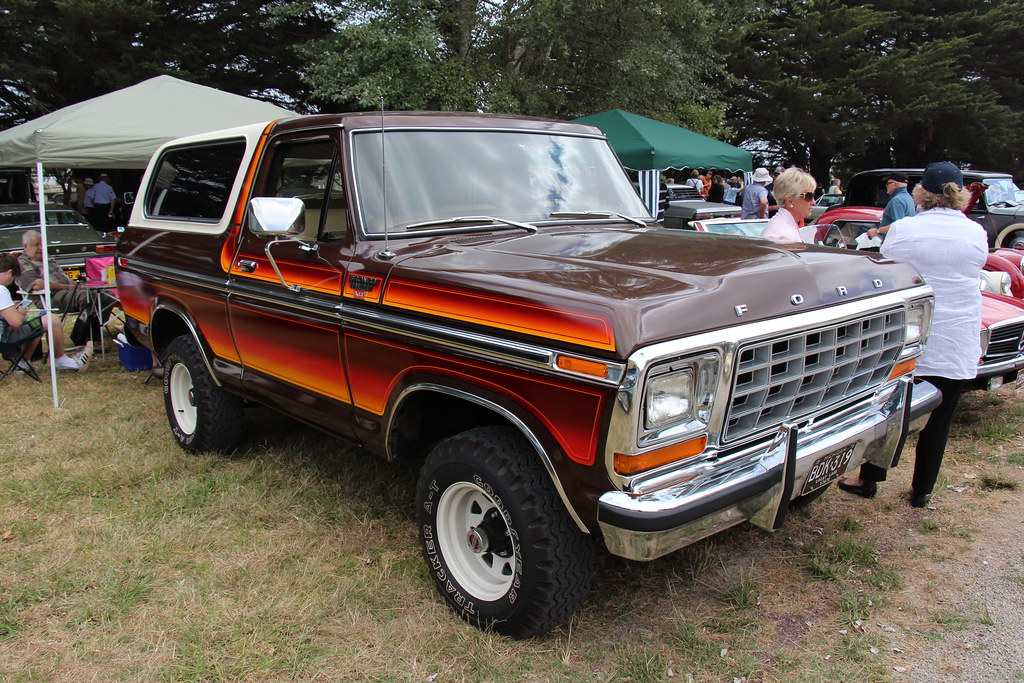
11. Ford Bronco
Few recent retro nameplate resurrections have captured the public’s imagination quite like the Ford Bronco. After a long hiatus, Ford absolutely nailed the relaunch by leaning heavily into the nostalgia factor, channeling the rugged, adventurous spirit of the older generations. They didn’t just bring back a name; they brought back an entire vibe, complete with old-school looks and subtle “Easter eggs” hidden around the vehicle that playfully reference its rich history. And boy, did it work wonders!
The Bronco’s return has been nothing short of a commercial and critical smash hit. Ford sold more than 116,000 examples in 2024 alone, and the model has garnered strong reviews from virtually every automotive outlet. It’s a testament to how effectively Ford managed to tap into that classic SUV appeal. It’s a stark contrast to other retro nameplate attempts, like Ford’s own revived Capri in Europe, which, instead of a sports car, became an uninspiring electric crossover. Buyers weren’t convinced by the Capri, leading to scaled-back production just weeks after its launch.
The key to the Bronco’s success is that it truly embodies the spirit of its predecessors, unlike the somewhat muddled identity of the new Capri. It’s become a major success story for Ford, proving that when you lean into heritage with genuine intent and deliver on the promise of capability and adventure, the market responds. As Ford, like many automakers, navigates the transition to electric powertrains, it remains to be seen where the next-generation Bronco will land. However, given the overwhelming demand and its undeniable popularity, it seems highly unlikely that Ford will want to mess with a winning formula.
Car Model Information: 2022 Ford Bronco Base
Name: Ford Bronco
Caption: 2021 Ford Bronco Outer Banks (4-door)
Manufacturer: Ford Motor Company
Production: 1965–1996,2021–present
Class: Compact SUV
Layout: Front-engine, four-wheel-drive
BodyStyle: SUV
Successor: Ford Expedition
ModelYears: 1966–1996,2021–present
Categories: 1970s cars, 1980s cars, 1990s cars, 2020s cars, All-wheel-drive vehicles
Summary: The Ford Bronco is a model line of SUVs manufactured and marketed by Ford. The first SUV model developed by the company, five generations of the Bronco were sold from the 1966 to 1996 model years. A sixth generation of the model line was introduced for the 2021 model year. The nameplate has been used on other Ford SUVs, namely the 1984–1990 Bronco II compact SUV, the 2021 Bronco Sport compact crossover, and the China-only 2025 Bronco New Energy.
Originally developed as a compact off-road vehicle using its own chassis, the Bronco initially competed against the Jeep CJ-5 and International Scout. For 1978, Ford enlarged the Bronco, making it a short-wheelbase version of the F-Series pickup truck; the full-size Bronco now competed against the Chevrolet K5 Blazer and Dodge Ramcharger.
Following a decline in demand for large two-door SUVs, Ford discontinued the Bronco after the 1996 model year, replacing it with the four-door Ford Expedition; followed by the larger Ford Excursion. After a 25-year hiatus, the sixth-generation Bronco was reintroduced in 2021 as a mid-size two-door SUV. It is also offered as a full-size four-door SUV with a 16 in (41 cm) longer wheelbase. It competes directly with the Jeep Wrangler as both a two-door and a four-door (hardtop) convertible.
From 1965 to 1996, the Ford Bronco was manufactured by Ford at its Michigan Truck Plant in Wayne, Michigan, where it also manufactures the sixth-generation version.
Get more information about: Ford Bronco
Buying a high-performing used car >>>
Brand: Ford Model: Bronco
Price: $35,950 Mileage: 63,778 mi.
Read more about: 15 Iconic Nameplates: Classic Car Brands Fueling the Electric Revolution
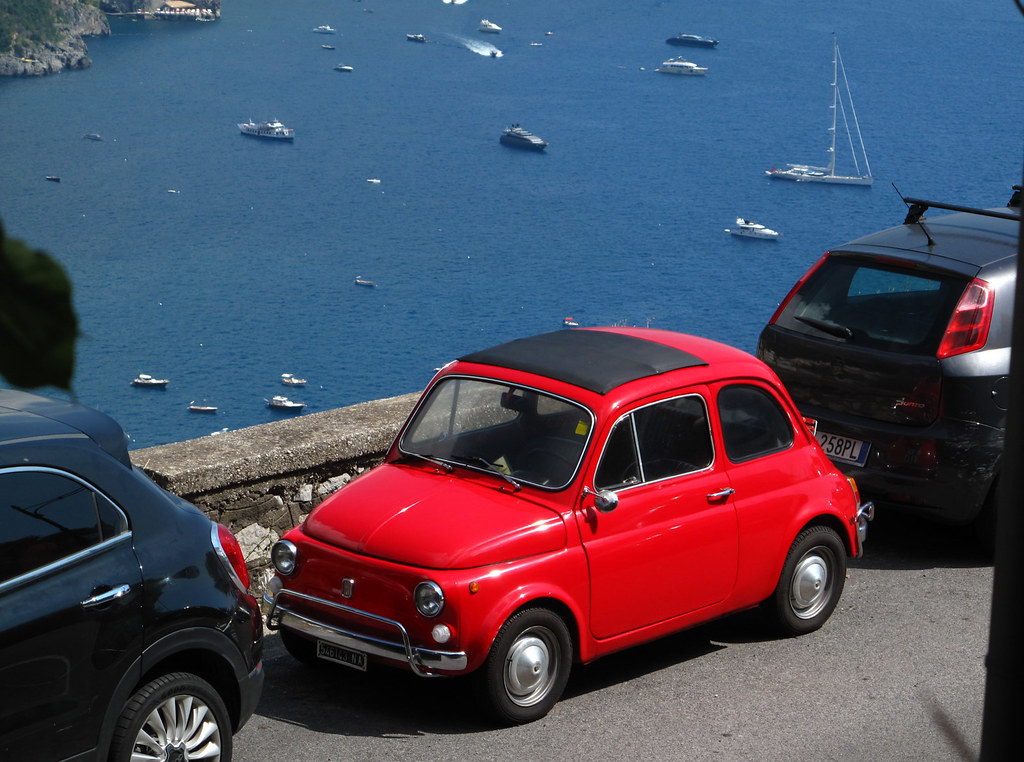
12. Fiat 500
The original Fiat 500, launched way back in 1957, wasn’t an instant sensation. Initially overshadowed by its larger, more competitively priced sibling, the 600, it took some clever reworking from Fiat – better equipment, more power, and a lower price point – to finally hit its stride. Throughout the 1960s, its popularity soared, becoming the right car at the right time for cash-strapped Italians who wanted to get on the road in style. Its unique, iconic styling remained largely unchanged, and by the time it was discontinued in 1975, over 3.8 million examples had been built, cementing its place in automotive history.
Fast forward decades, and the 500 nameplate, dormant for so long, was triumphantly revived in 2007. Just like the original, the new generation car boasted that same distinctive styling, offered a modest powertrain, and came with a low starting price. It was an instant commercial smash hit across Europe from launch, with Fiat proudly announcing in 2019 that it had sold over three million examples of the new model. It perfectly captured the essence of its ancestor while fitting into the modern urban landscape.
However, even a beloved icon isn’t immune to market shifts and technological disruption. In a controversial move, Fiat eventually axed the popular gas-powered 500 in favor of an all-electric 500e. This decision led to a significant slump in demand, prompting Fiat to temporarily pause production of the car in late 2024. But in a true testament to the nameplate’s enduring appeal, the brand has since reversed course, planning to relaunch the 500 as a hybrid in late 2025. It’s a bumpy road back to relevance, for sure, but the Fiat 500 proves that some legends are simply too good to stay down, always finding a way to charm their way back into our hearts.
Car Model Information: 2012 FIAT 500 Lounge
Name: Fiat 500
Caption: 1970 Fiat 500 L
Aka: Puch 500
Manufacturer: Fiat Automobiles
Production: 1957–1975,3,893,294 units
Assembly: Turin,Desio
Designer: Dante Giacosa
Class: City car
BodyStyle: ubl
Layout: Rear-engine, rear-wheel drive layout
Doors: Suicide door,Car door#Conventional
Related: Autobianchi Bianchina,NSU/Fiat Weinsberg 500,Vignale Gamine,Autobianchi Giardiniera
Engine: Cubic centimetre,499 cc I2,594 cc I2
Transmission: Manual transmission
Wheelbase: {{convert,1840,mm,in,1,abbr=on
Abbr: on
Length: 2970 mm
Width: 1320 mm
Height: 1320 mm
Weight: 499 kg
Predecessor: Fiat 500 “Topolino”
Successor: Fiat 126,Fiat 500 (2007)
Sp: uk
Categories: 1960s cars, 1970s cars, All Wikipedia articles written in British English, All articles with unsourced statements, Articles containing Italian-language text
Summary: The Fiat 500 (Italian: Cinquecento, pronounced [ˌtʃiŋkweˈtʃɛnto]) is an economy / city car that was manufactured and marketed by Fiat Automobiles from 1957 until 1975. It was sold as a two-door semi-convertible or saloon car and as a three-door panel van or estate car.
Launched as the Nuova (new) 500 in July 1957, as a successor to the 500 “Topolino”, it was an inexpensive and practical small car. Measuring 2.97 metres (9 feet 9 inches) long, and originally powered by a rear-mounted 479 cc two-cylinder, air-cooled engine, the 500 was 24.5 centimetres (9.6 inches) smaller than Fiat’s 600, launched two years earlier, and is considered one of the first purpose-designed city cars.
In 1959, Dante Giacosa received a Compasso d’Oro industrial design prize for the Fiat 500. This marked the first time a Compasso d’Oro was awarded to an automotive manufacturer.
Get more information about: Fiat 500
Buying a high-performing used car >>>
Brand: Fiat Model: 500
Price: $5,950 Mileage: 91,698 mi.
Read more about: 15 Iconic Nameplates: Classic Car Brands Fueling the Electric Revolution

13. Honda/Acura NSX
The Honda NSX – or Acura NSX in America – is a supercar that has ridden the wave of automotive trends not once, but twice, only to be discontinued again most recently after 2022. Its first debut in 1989 caused an absolute storm in the automotive world. It handled unlike any other car on the market, boasted the legendary Japanese reliability of any other Honda, and, remarkably, could be driven comfortably at everyday speeds. The first generation was a true pioneer, not just for Honda, but for the entire supercar segment, proving that exotic performance didn’t have to come with temperamental ownership.
Unfortunately, the economic tides turned, and with the Japanese economic bubble bursting, Honda found itself lacking the spare funds needed to keep developing and pushing the NSX forward. By the time its first production run ended, it was no longer the unique, market-beating supercar it had once been, having been eclipsed by newer, more technologically advanced rivals. It was a premature retirement for a truly groundbreaking machine, a victim of circumstance rather than inherent flaws.
Honda, or Acura, brought the NSX back for a second generation in 2016, again promising a distinctively Japanese take on the supercar. It aimed to be practical and easy to live with, yet capable of keeping pace with the European exotica when the roads opened up. It was a technological marvel, featuring a hybrid powertrain and advanced all-wheel drive, but much like its original incarnation, it struggled to carve out a dominant niche in an increasingly competitive and rapidly evolving supercar market. The magic wasn’t quite the same, and sales never truly took off.
The second discontinuation of the NSX after 2022 underscores the immense challenge of reviving an icon, even one as revered as this. While it retained many of the core tenets of the original – usability, performance, and advanced engineering – the market had moved on, and perhaps the spark wasn’t as potent. The NSX’s journey, with its multiple farewells, serves as a poignant reminder that even with strong foundations and a brilliant concept, navigating the fickle automotive world and securing a lasting return to relevance can be an incredibly bumpy, and sometimes fleeting, endeavor.
—
Read more about: The Ultimate Encore: 10 Cherished Cars That Rose From the Ashes, Reigniting Our Automotive Passion!
From the brilliant misfits that found their glory years after their initial run, to the outright duds that we’re honestly glad to see vanish, and the legends that dared to make a comeback, our journey through these 13 rides has been a wild one. The automotive world is a vibrant, sometimes brutal, ecosystem where timing, marketing, and sheer engineering genius (or lack thereof) can make or break a vehicle’s destiny. Some cars were ahead of their time, victims of circumstances beyond their control, only to be revered years later by an appreciative audience. Others were simply flawed from the start, demonstrating how ambition, cost-cutting, or just plain misjudgment can lead to a spectacular flop. And then there are those rare nameplates, like old rock bands, that manage to get the band back together, often with new members and a fresh sound, proving that a strong legacy can indeed withstand the test of time, even if the road is a little winding. Every discontinued car, whether secretly amazing or deservedly forgotten, tells a story about its era, about what we valued, and what we missed. As we look back, it’s not just about nostalgia; it’s about understanding the intricate dance between innovation, market demands, and the enduring human desire for that perfect ride. So, here’s to the cars that taught us lessons, the ones that made us dream, and the ones that just made us shake our heads. They all contribute to the rich, unforgettable tapestry of automotive history, reminding us that every car, good or bad, leaves a mark on the road of life.


